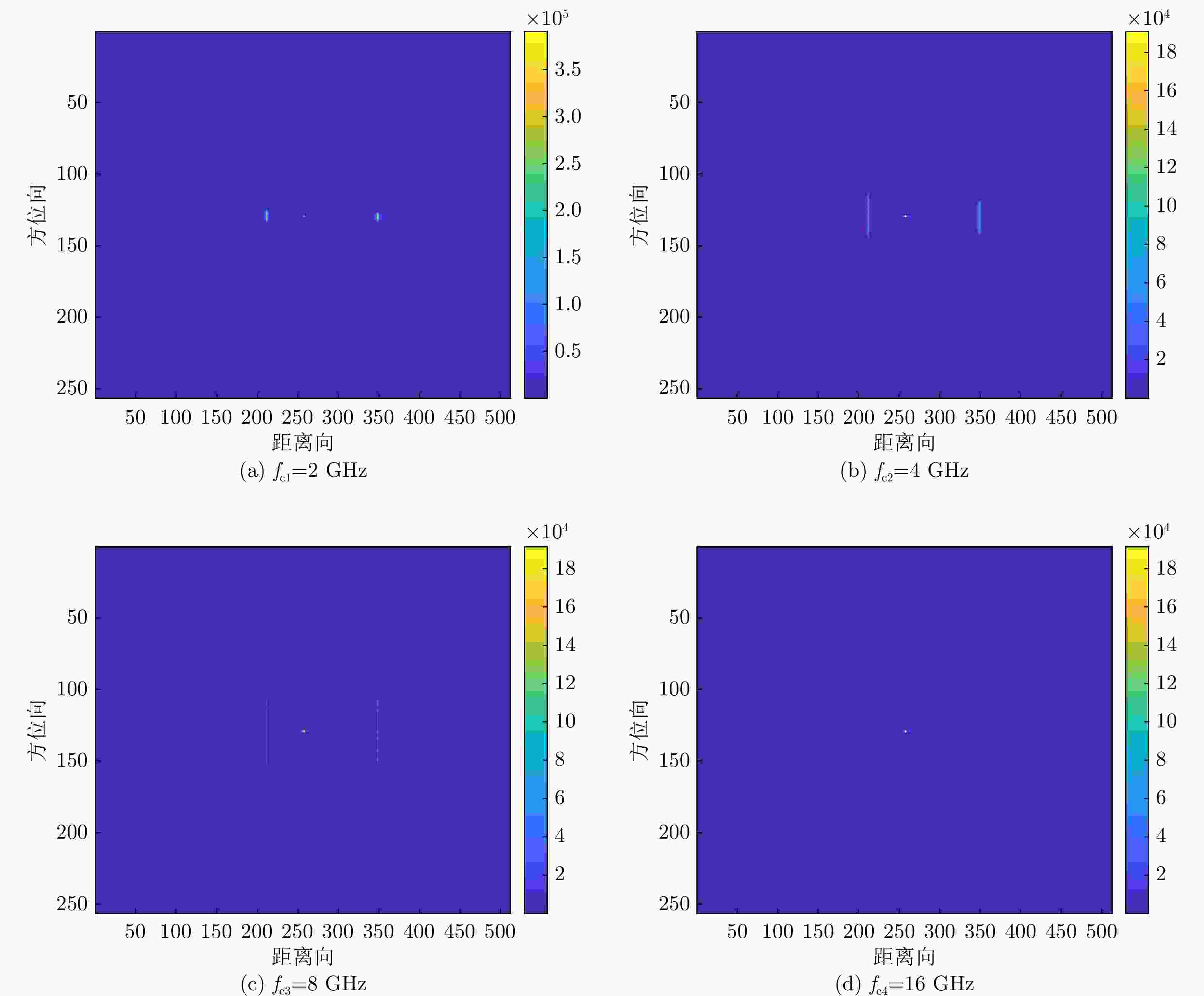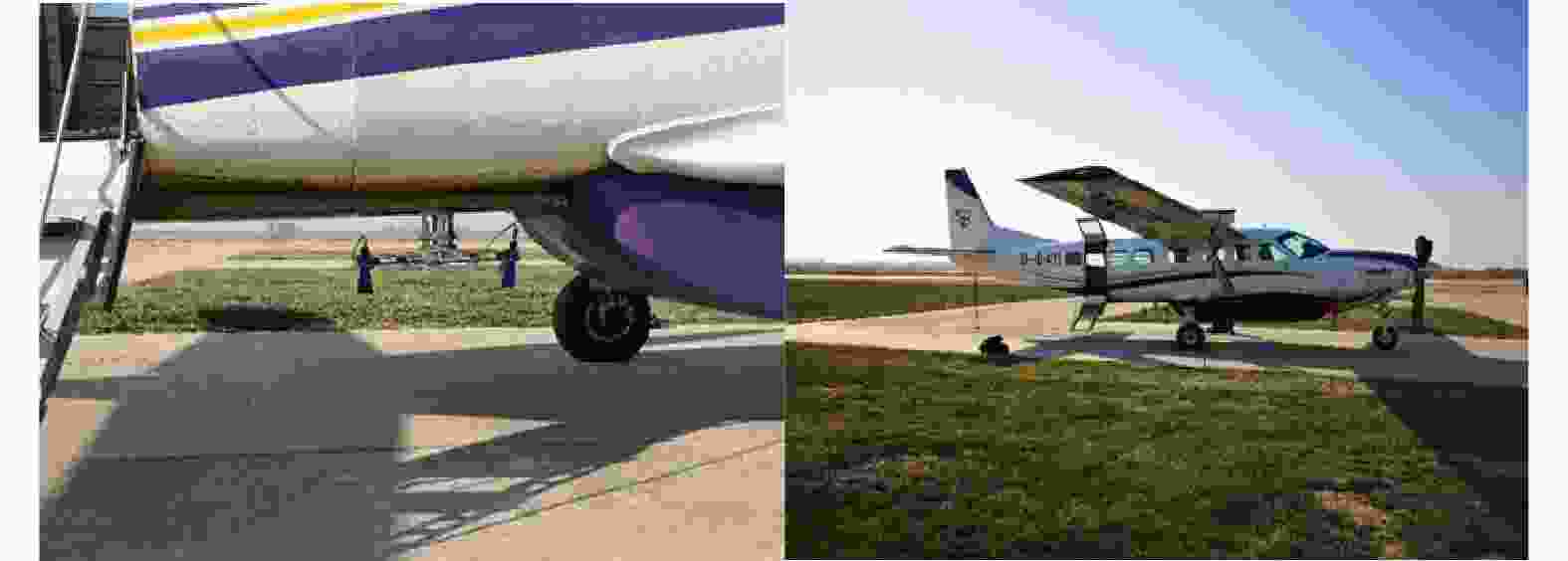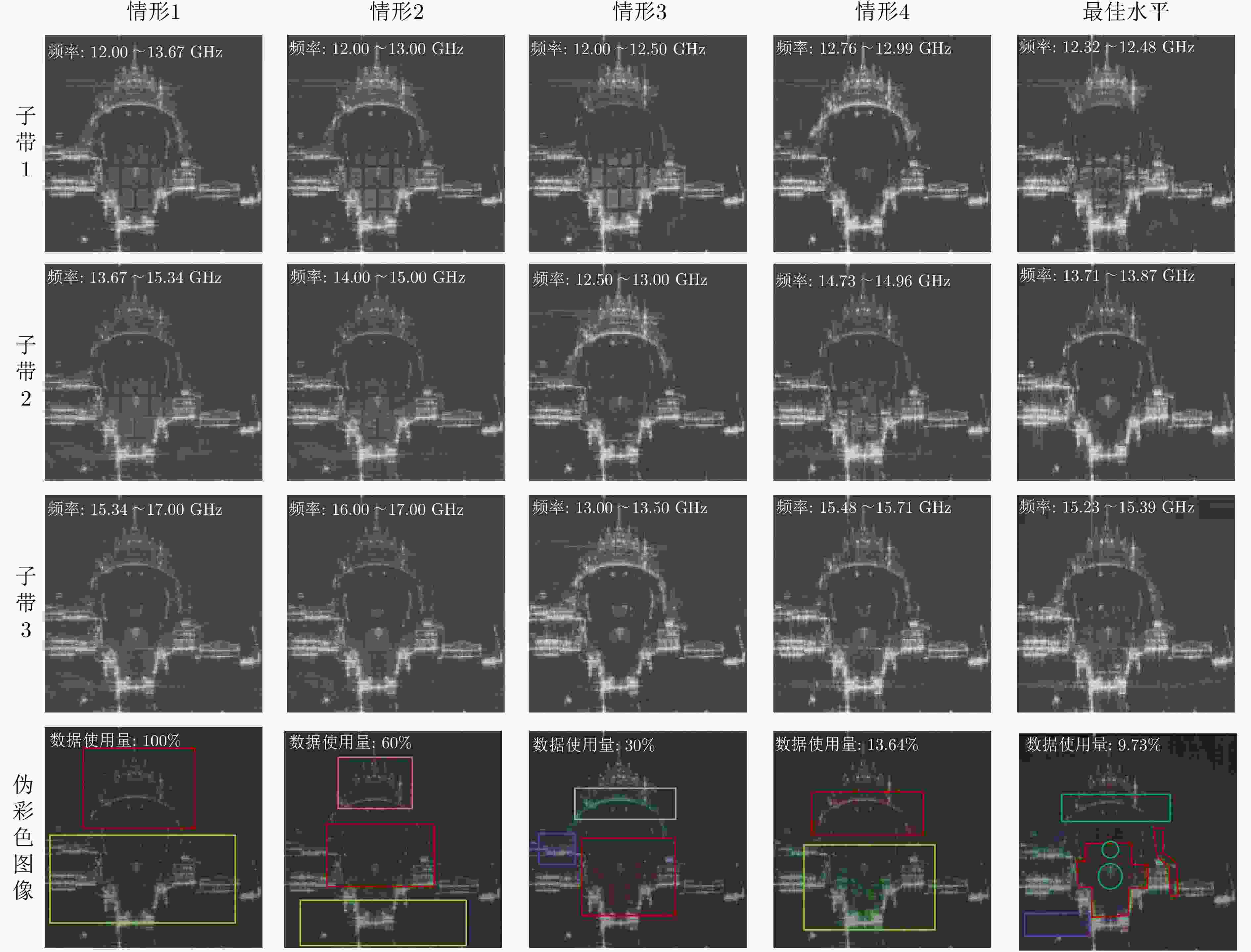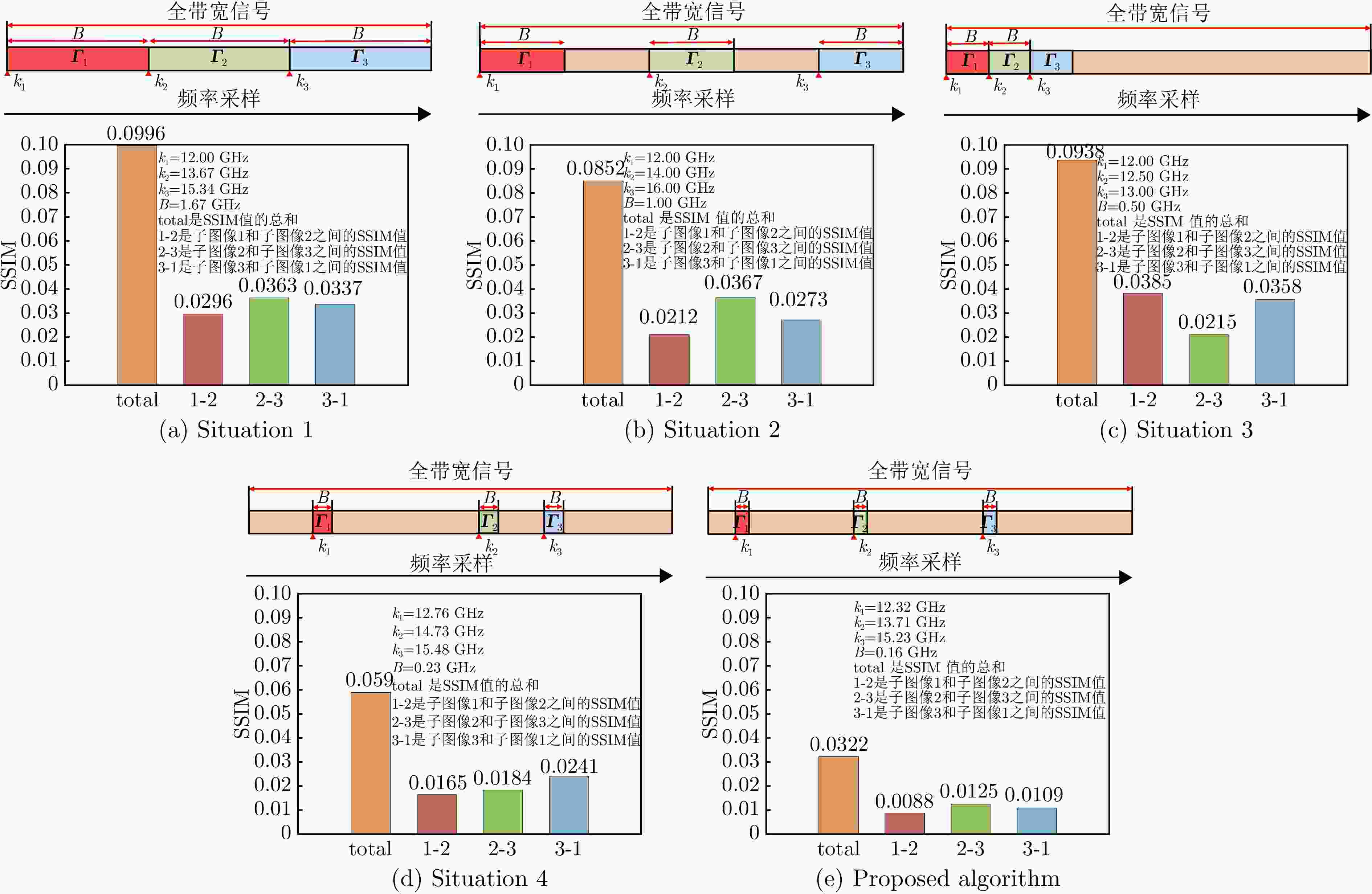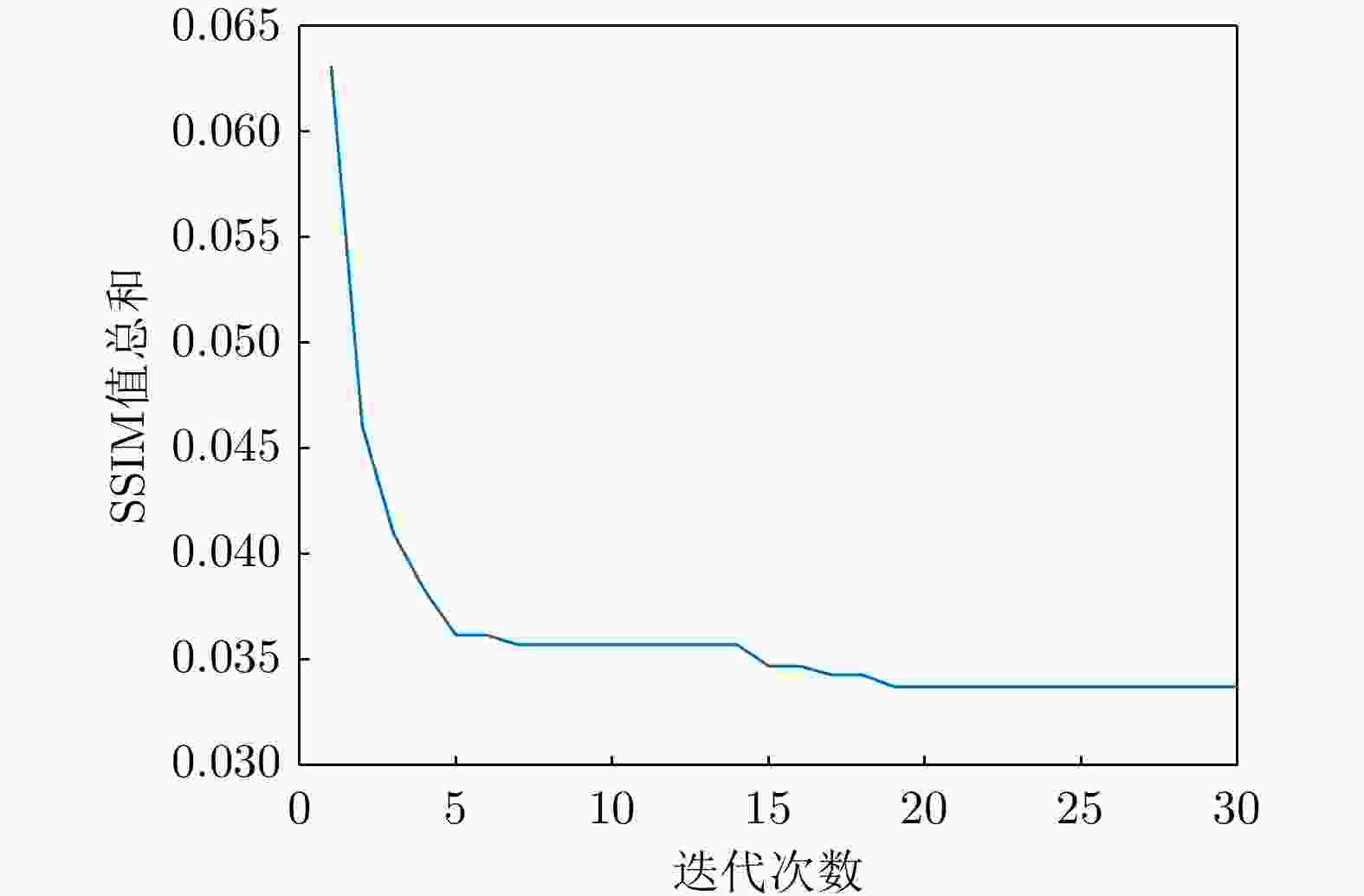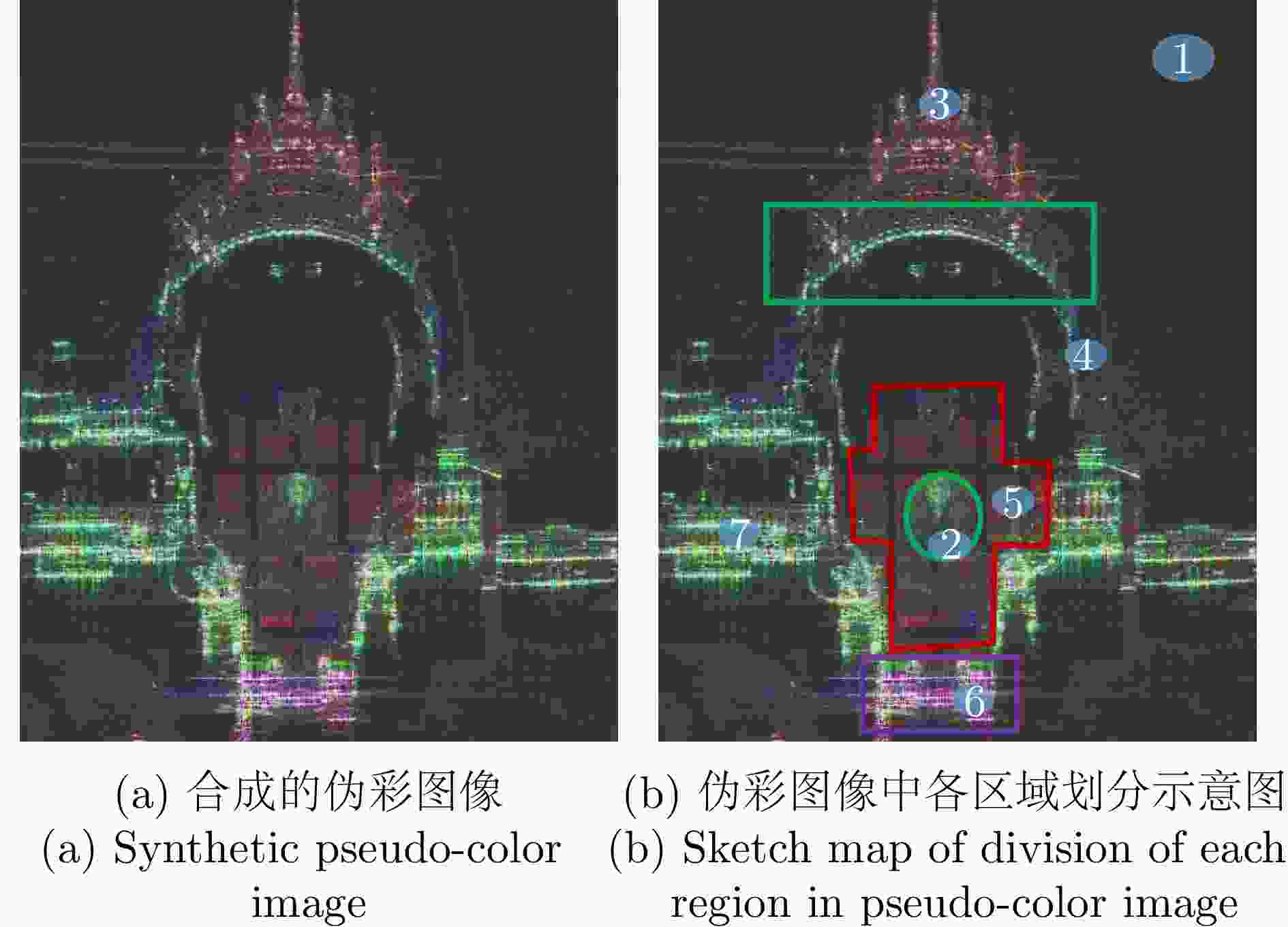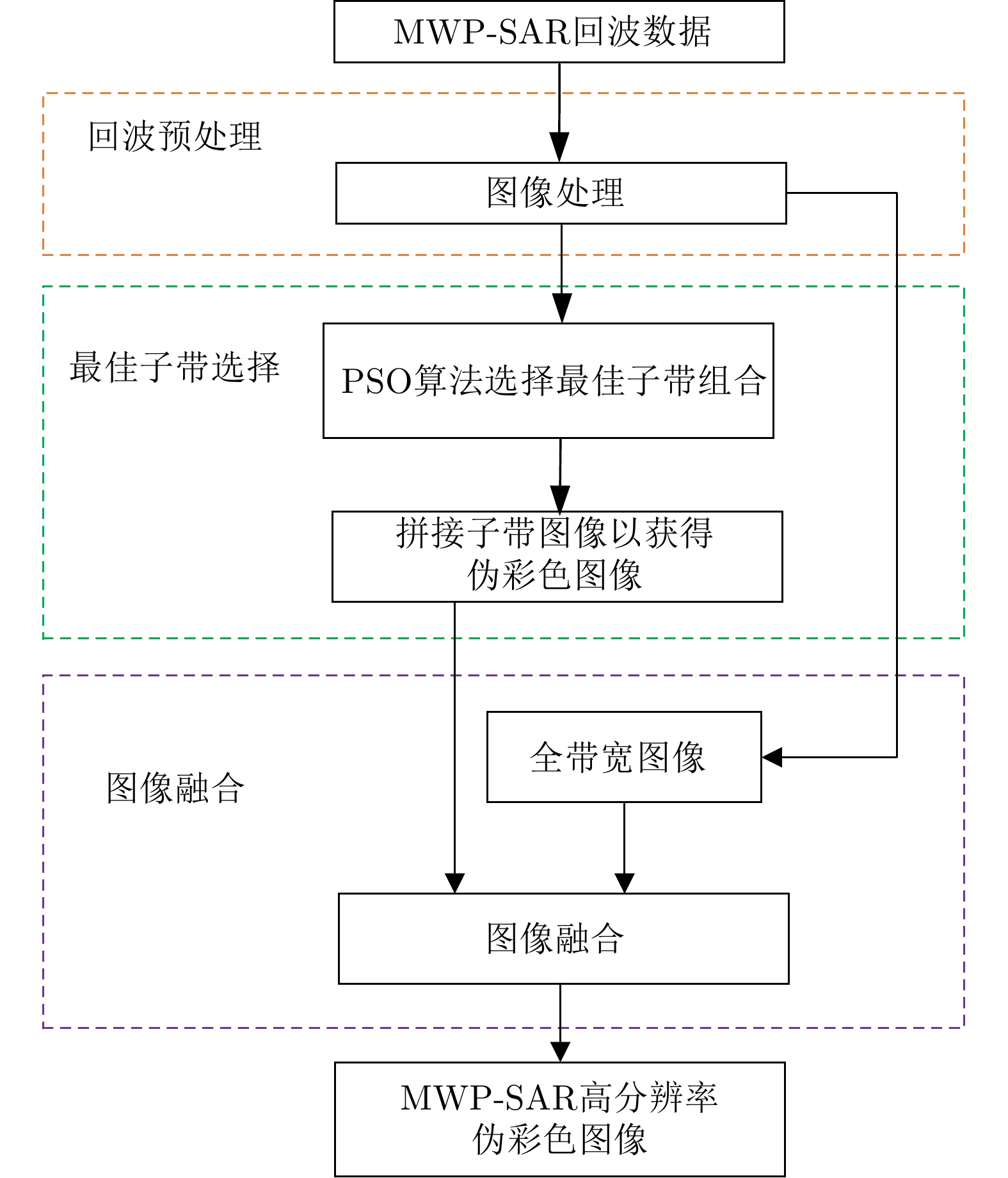Optimal Sub-band Selection Algorithm for Pseudo-color Image Synthesis in Microwave Photonic SAR
-
摘要: 微波光子(MWP)雷达是一种通过光子器件对传统微波雷达硬件架构进行改进的新型雷达系统。借助光子器件卓越的物理特性,MWP雷达能够发射超宽带、高线性度的高质量线性调频信号,从而实现对目标的超高分辨率探测与成像。在目标成像与探测过程中,不同结构和特性的目标区域对不同频率信号的响应存在差异。因此,微波光子雷达具备通过散射差异生成伪彩图像的潜力,从而进一步提升微波光子合成孔径雷达(MWP-SAR)的信息获取能力。传统的遥感技术生成的伪彩图像分辨率较低,无法达到厘米级的分辨。因此,该文提出了一种在保证MWP-SAR高分辨率的前提下合成伪彩图像的方法。该算法首先建立了最优子带回波搜索模型,随后采用最优子带搜索算法对超宽带回波进行处理,以获取散射特性相差最大的子带回波通道。再对多子带差异图像进行色彩合成,通过这一处理步骤,能够生成对目标散射特性最佳描述的伪彩图像。同时,为了确保MWP-SAR的分辨率不受到损失,建立了一个融合模型,将全分辨率的SAR图像与多子带图像相融合,以维持伪彩图像的高分辨率。最终,通过实测的机载MWP-SAR数据成功地合成了全分辨率的伪彩色图像,从而验证了该算法的有效性。该算法可以使得MWP-SAR在成像时获取更多的目标信息,为成像雷达微波视觉的实现提供辅助。
-
关键词:
- 微波光子(MWP) /
- 合成孔径雷达(SAR) /
- 伪彩色图像 /
- 目标散射特性 /
- 最优子带
Abstract: Microwave Photonic (MWP) radars have remarkably improved traditional microwave radar hardware architectures using photonics devices. With the exceptional physical properties of photonic devices, MWP radars can emit ultra-wideband, high-linearity, high-quality linear frequency modulation signals, allowing ultra-high-resolution target imaging and detection. Different target regions exhibit distinct responses to different frequency signals during target imaging and detection due to their diverse structures and characteristics. Therefore, MWP radars have the potential to generate pseudo-color images based on scattering differences, further enhancing the information retrieval capability of MWP Synthetic Aperture Radar (MWP-SAR). Pseudo-color images generated using traditional remote sensing techniques cannot achieve centimeter-level resolution. Therefore, we propose a method for generating pseudo-color images while maintaining the resolution of MWP-SAR. The algorithm first determines an optimal sub-band echo search model and subsequently employs the optimal sub-band search algorithm to process the ultra-wideband echoes to obtain sub-band echo channels with the largest scattering characteristic differences. The multi-sub-band images are then color-composited to generate pseudo-color images that best describe the target scattering characteristics. However, to ensure the high resolution of MWP-SAR, a fusion model is established to combine the full-resolution SAR image with the multi-sub-band image. Finally, full-resolution pseudo-color images are successfully synthesized using the measured airborne MWP-SAR data, validating the effectiveness of the algorithm. This algorithm enables MWP-SAR to obtain more target information during imaging, offering assistance in implementing imaging radar and microwave vision. -
算法1:全分辨伪彩图生成算法流程 Alg.1: Algorithm for generating full-resolution
pseudo-colour images需要:全频带回波数据; 目的:全分辨伪彩图像; 流程: 步骤1:获取MWP-SAR的原始回波数据; 步骤2:对MWP-SAR回波数据进行预处理,通过成像算法得
到全带宽图像;步骤3:建立微波光子多子带模型,通过对预处理后的数据进
行滤波从而获得子带数据并成像;滤波所需要的参数
使用PSO算法选取;选择SSIM作为PSO算法的目标
函数,从而获得散射差异最大的3个子带图像;步骤4:将子带图像分别映射到R, G, B 3个通道,合成伪彩图像; 步骤5:建立融合模型,将步骤1中获得的全带宽图像与步骤3
中合成的伪彩图像进行图像融合;步骤6:最终的融合结果即为MWP-SAR高分辨伪彩图像3。 表 1 不同频段的仿真参数
Table 1. Parameters for different frequency bands
表 2 图4中子带图像的SSIM
Table 2. SSIM between the sub-band images of Fig. 4
算法2 基于PSO算法的最优子带选择算法 Alg.2 Optimal sub-band selection algorithm based on PSO 需要:初始化参数集的取值范围; 全频带回波数据; 目的:目标函数最优时参数集合的值; 步骤1:初始化粒子群参数。最初将粒子群大小设置为m,迭
代次数设置为T,惯性权重设置为$ \omega $,个体学习因子设置为
$ {c_1} $,种群学习因子设置为$ {c_2} $;步骤2:随机生成初始解。在可行解空间中随机初始化了m个
粒子的种群。与每个粒子对应的独立变量参数是
${Z_i} = \{ {z_{i1}},{z_{i2}},{z_{i3}},{z_{i4}}\} $,每个粒子对应一个随机速度
${V_i} = \{ {v_{i1}},{v_{i2}},{v_{i3}},{v_{i4}}\} $;步骤3:计算当前种群中每个粒子的目标函数
$f(B,{k_1},{k_2},{k_3})$。选择每个个体的局部最优位置${P_{i,{{p\_{\mathrm{best}}}}}} = ({p_{i1,}}{p_{i2}},{p_{i3}},{p_{i4}})$和
整个种群的全局最优位置
$ {P_{g\_{\mathrm{best}}}} = ({p_{1,{{g\_{\mathrm{bes}}t}},}}{p_{2,g\_{\mathrm{best}}}},{p_{3,g\_{\mathrm{best}}}},{p_{4,g\_{\mathrm{best}}}}) $。步骤4:更新每个个体的速度。 $ v_{id}^{k + 1} = \omega v_{id}^k + {c_1}{r_1}(p_{id,p\_{\mathrm{best}}}^k - z_{id}^k) + {c_2}{r_2}(p_{d,g\_{\mathrm{best}}}^k - z_{id}^k) $ 其中,$ {r_1} $和$ {r_2} $是区间内的随机数,以增加搜索的随机性,k表
示当前迭代次数,d表示粒子位置的维度(第d个自变量);步骤5:更新每个个体的位置向量。 $ z_{id}^{k + 1} = z_{id}^k + v_{id}^{k + 1} $ 步骤6:终止条件判断。当迭代次数达到T时,输出$ {P_{g\_{\mathrm{best}}}} $;
否则继续迭代并跳转到步骤3。表 3 机载光子LFM-CW SAR的参数
Table 3. The parameters of the airborne photonic LFM-CW SAR
参数 数值 中心频率($\lambda $) 2.07 cm PRF (${f_{\mathrm{p}}}$) 5000 Hz 传输信号功率(${P_{{\mathrm{av}}}}$) 20 W 天线增益(G) 19.5 dB 仰角($\beta $) 45° 平台速度($\nu $) 55 m/s 平台高度(h) 500 m 表 4 子带选择的参数(GHz)
Table 4. Parameters for sub-band selection (GHz)
组别 $ {k_1} $ $ {k_2} $ $ {{{k}}_3} $ B 1 12.00 13.67 15.34 1.67 2 12.00 14.00 16.00 1.00 3 12.00 12.50 13.00 0.50 4 12.76 14.73 15.48 0.23 optimum 12.32 13.71 15.23 0.16 表 5 不同频带宽度子带选择的参数及对应结果指标
Table 5. Parameters for sub-band selection with different bandwidths and corresponding result indicators
序号 ${k_1}$ (GHz) $ {k_2} $ (GHz) ${k_3}$ (GHz) B (GHz) SSIM 饱和度 对比度 图11(a) 12.3 13.7 15.2 0.10 0.0369 0.1604 21.8645 图11(b) 12.3 13.7 15.2 0.80 0.0720 0.1213 17.1421 图11(c) 12.3 13.7 15.2 0.05 0.0337 0.1777 23.8014 图11(d) 13.0 13.5 14.0 0.40 0.0756 0.1256 17.5291 图11(e) 12.0 13.3 14.6 1.30 0.0947 0.1172 16.5783 图11(f) 12.0 13.6 15.2 1.50 0.0895 0.1166 16.4343 表 6 典型地物与伪彩图像颜色对应表
Table 6. Correspondence between typical objects and colors in pseudo-color image
典型地物 对应的伪彩合成颜色 1号草地区域 黑色 2号花坛区域 深绿色 3号高塔区域 红色 4号纵向矮墙区域 蓝色 5号地砖区域 深红色 6号大门区域 紫色 7号围墙区域 浅绿色 表 7 图像质量比较
Table 7. Image quality comparison
不同子带组合选择 颜色饱和度 色彩对比度 情形1 0.1157 16.2318 情形2 0.1152 16.3786 情形3 0.1428 18.5758 情形4 0.1389 18.2355 本文 0.1505 20.6675 -
[1] SEEDS A J and WILLIAMS K J. Microwave photonics[J]. Journal of Lightwave Technology, 2006, 24(12): 4628–4641. doi: 10.1109/JLT.2006.885787. [2] KIPPENBERG T J, HOLZWARTH R, and DIDDAMS S A. Microresonator-based optical frequency combs[J]. Science, 2011, 332(6029): 555–559. doi: 10.1126/science.1193968. [3] PAN Shilong and ZHANG Yamei. Microwave photonic radars[J]. Journal of Lightwave Technology, 2020, 38(19): 5450–5484. doi: 10.1109/JLT.2020.2993166. [4] ZHANG Fangzheng, GUO Qingshui, WANG Ziqian, et al. Photonics-based broadband radar for high-resolution and real-time inverse synthetic aperture imaging[J]. Optics Express, 2017, 25(14): 16274–16281. doi: 10.1364/oe.25.016274. [5] MELO S, PINNA S, BOGONI A, et al. Dual-use system combining simultaneous active radar & communication, based on a single photonics-assisted transceiver[C]. 2016 17th International Radar Symposium, Krakow, Poland, 2016: 1–4. doi: 10.1109/IRS.2016.7497379. [6] RASHIDINEJAD A and WEINER A M. Photonic radio-frequency Arbitrary waveform generation with maximal time-bandwidth product capability[J]. Journal of Lightwave Technology, 2014, 32(20): 3383–3393. doi: 10.1109/JLT.2014.2331491. [7] SIMPSON T B, LIU J M, HUANG K F, et al. Nonlinear dynamics induced by external optical injection in semiconductor lasers[J]. Quantum and Semiclassical Optics: Journal of the European Optical Society Part B, 1997, 9(5): 765–784. doi: 10.1088/1355-5111/9/5/009. [8] SERAFINO G, NOVIELLO C, MARESCA S, et al. Experimental dual-band coherent photonics-based radar network with ISAR imaging[C]. 2022 IEEE Radar Conference, New York City, USA, 2022: 1–6. doi: 10.1109/RadarConf2248738.2022.9763913. [9] JIANG Wen, LIU Jianwei, YANG Jiyao, et al. A novel multiband fusion method based on a modified RELAX algorithm for high-resolution and anti-non-Gaussian colored clutter microwave imaging[J]. IEEE Transactions on Geoscience and Remote Sensing, 2021, 60: 5105312. doi: 10.1109/TGRS.2021.3109724. [10] DEVGAN P S, URICK V J, DIEHL J F, et al. Improvement in the phase noise of a 10 GHz optoelectronic oscillator using all-photonic gain[J]. Journal of Lightwave Technology, 2009, 27(15): 3189–3193. doi: 10.1109/JLT.2008.2009472. [11] YAO Jianping. Microwave photonics[J]. Journal of Lightwave Technology, 2009, 27(3): 314–335. doi: 10.1109/JLT.2008.2009551. [12] LI Ruoming, LI Wangzhe, DONG Yongwei, et al. An ultrahigh-resolution continuous wave synthetic aperture radar with photonic-assisted signal generation and dechirp processing[C]. 2020 17th European Radar Conference, Utrecht, Netherlands, 2021: 13–16. doi: 10.1109/EuRAD48048.2021.00015. [13] WANG Anle, WO Jianghai, LUO Xiong, et al. Ka-band microwave photonic ultra-wideband imaging radar for capturing quantitative target information[J]. Optics Express, 2018, 26(16): 20708–20717. doi: 10.1364/OE.26.020708. [14] SERAFINO G, MARESCA S, DI MAURO L, et al. A photonics-assisted multi-band MIMO radar network for the port of the future[J]. IEEE Journal of Selected Topics in Quantum Electronics, 2021, 27(6): 6000413. doi: 10.1109/JSTQE.2021.3092880. [15] MARESCA S, SERAFINO G, NOVIELLO C, et al. Field trial of a coherent, widely distributed, dual-band photonics-based MIMO radar with ISAR imaging capabilities[J]. Journal of Lightwave Technology, 2022, 40(20): 6626–6635. doi: 10.1109/JLT.2022.3182421. [16] PAN Shilong and ZHU Dan. Broadband cognitive radio enabled by photonics[C]. 45th European Conference on Optical Communication, Dublin, Ireland, 2019: 1–3. doi: 10.1049/cp.2019.0776. [17] PAN Shilong, YE Xingwei, ZHANG Yamei, et al. Microwave photonic array radars[J]. IEEE Journal of Microwaves, 2021, 1(1): 176–190. doi: 10.1109/JMW.2020.3034583. [18] 潘时龙, 朱丹. 微波光子认知雷达技术[J]. 雷达科学与技术, 2021, 19(2): 117–129. doi: 10.3969/j.issn.1672-2337.2021.02.001.PAN Shilong and ZHU Dan. A microwave photonic cognitive radar[J]. Radar Science and Technology, 2021, 19(2): 117–129. doi: 10.3969/j.issn.1672-2337.2021.02.001. [19] CHANDRAKANTH R, SAIBABA J, VARADAN G, et al. Feasibility of high resolution SAR and multispectral data fusion[C]. 2011 IEEE International Geoscience and Remote Sensing Symposium, Vancouver, Canada, 2011: 356–359. doi: 10.1109/IGARSS.2011.6048972. [20] YOKOYA N, GROHNFELDT C, and CHANUSSOT J. Hyperspectral and multispectral data fusion: A comparative review of the recent literature[J]. IEEE Geoscience and Remote Sensing Magazine, 2017, 5(2): 29–56. doi: 10.1109/MGRS.2016.2637824. [21] 邓旭, 徐新, 董浩. 单极化合成孔径雷达图像颜色特征编码与分类[J]. 计算机应用, 2018, 38(7): 2056–2063. doi: 10.11772/j.issn.1001-9081.2017112780.DENG Xu, XU Xin, and DONG Hao. Color feature coding and classification of single polarized synthetic aperture radar image[J]. Journal of Computer Applications, 2018, 38(7): 2056–2063. doi: 10.11772/j.issn.1001-9081.2017112780. [22] ZHANG Xinzheng, XIA Jili, TAN Xiaoheng, et al. PolSAR image classification via learned superpixels and QCNN integrating color features[J]. Remote Sensing, 2019, 11(15): 1831. doi: 10.3390/rs11151831. [23] FRANCESCHETTI G, LANARI R, PASCAZIO V, et al. WASAR: A wide-angle SAR processor[J]. IEE Proceedings F (Radar and Signal Processing), 1992, 139(2): 107–114. doi: 10.1049/ip-f-2.1992.0014. [24] INOUE Y, KUROSU T, MAENO H, et al. Season-long daily measurements of multifrequency (Ka, Ku, X, C, and L) and full-polarization backscatter signatures over paddy rice field and their relationship with biological variables[J]. Remote Sensing of Environment, 2002, 81(2/3): 194–204. doi: 10.1016/S0034-4257(01)00343-1. [25] RANSON K J and SUN Guoqing. Mapping biomass of a northern forest using multifrequency SAR data[J]. IEEE Transactions on Geoscience and Remote Sensing, 1994, 32(2): 388–396. doi: 10.1109/36.295053. [26] HAI Yu, LI zhongyu, WU Junjie, et al. Microwave photonic SAR high-precision imaging based on optimal subaperture division[J]. IEEE Transactions on Geoscience and Remote Sensing, 2022, 60: 5232317. doi: 10.1109/TGRS.2022.3192583. [27] 徐丰, 金亚秋. 从物理智能到微波视觉[J]. 科技导报, 2018, 36(10): 30–44. doi: 10.3981/j.issn.1000-7857.2018.10.004.XU Feng and JIN Yaqiu. From the emergence of intelligent science to the research of microwave vision[J]. Science & Technology Review, 2018, 36(10): 30–44. doi: 10.3981/j.issn.1000-7857.2018.10.004. [28] LI Ruoming, LI Wangzhe, DONG Yongwei, et al. FDIR—a wideband photonic-assisted SAR system[J]. IEEE Transactions on Aerospace and Electronic Systems, 2023, 59(4): 4333–4346. doi: 10.1109/TAES.2023.3240111. -



 作者中心
作者中心 专家审稿
专家审稿 责编办公
责编办公 编辑办公
编辑办公
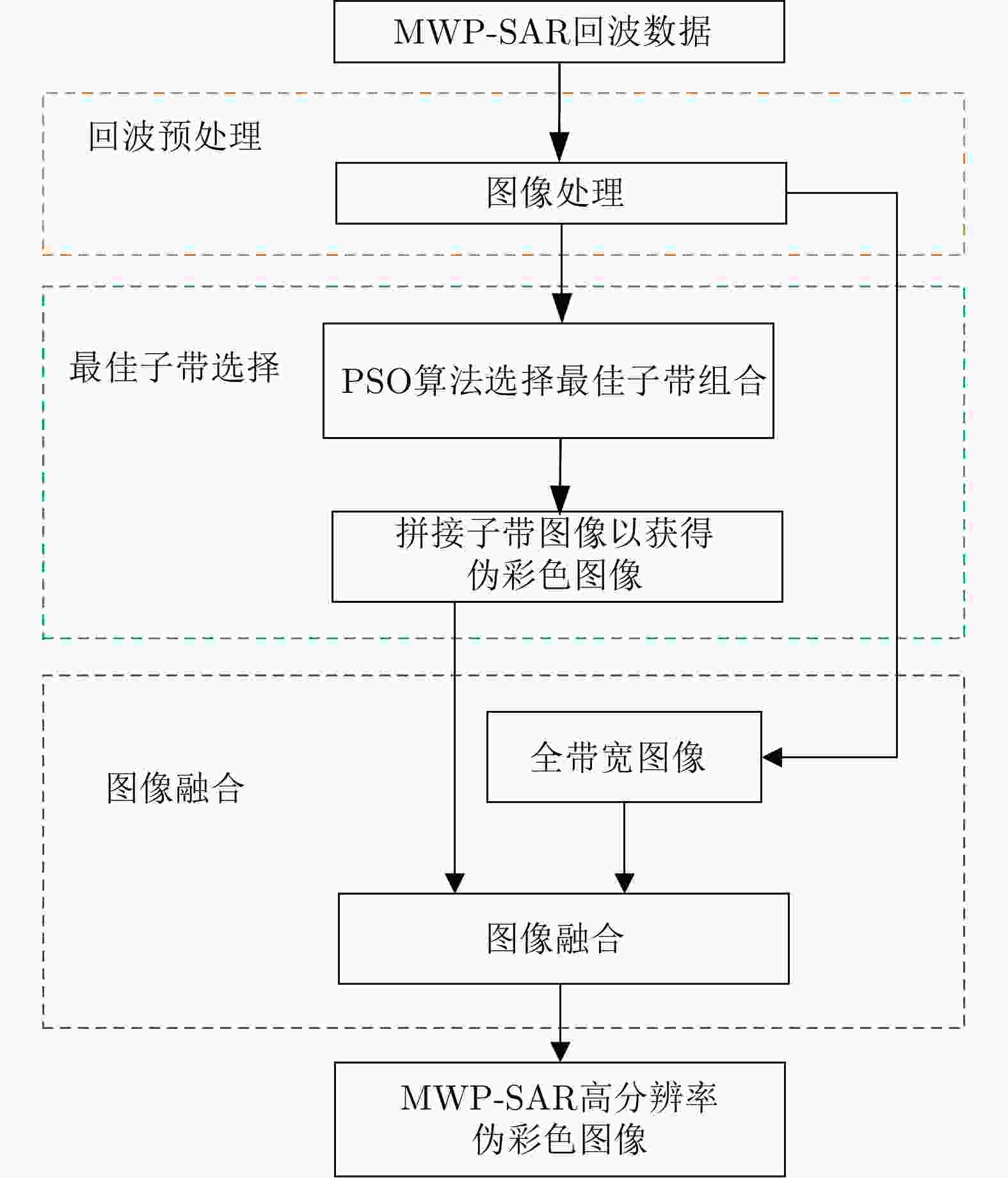
 下载:
下载:

